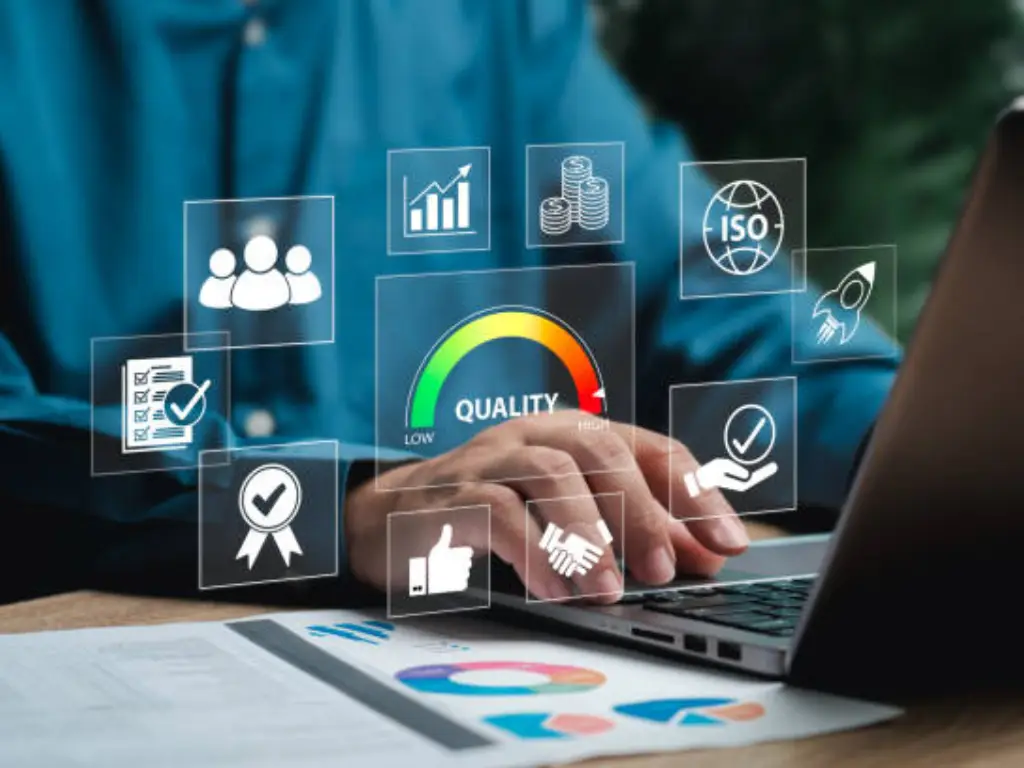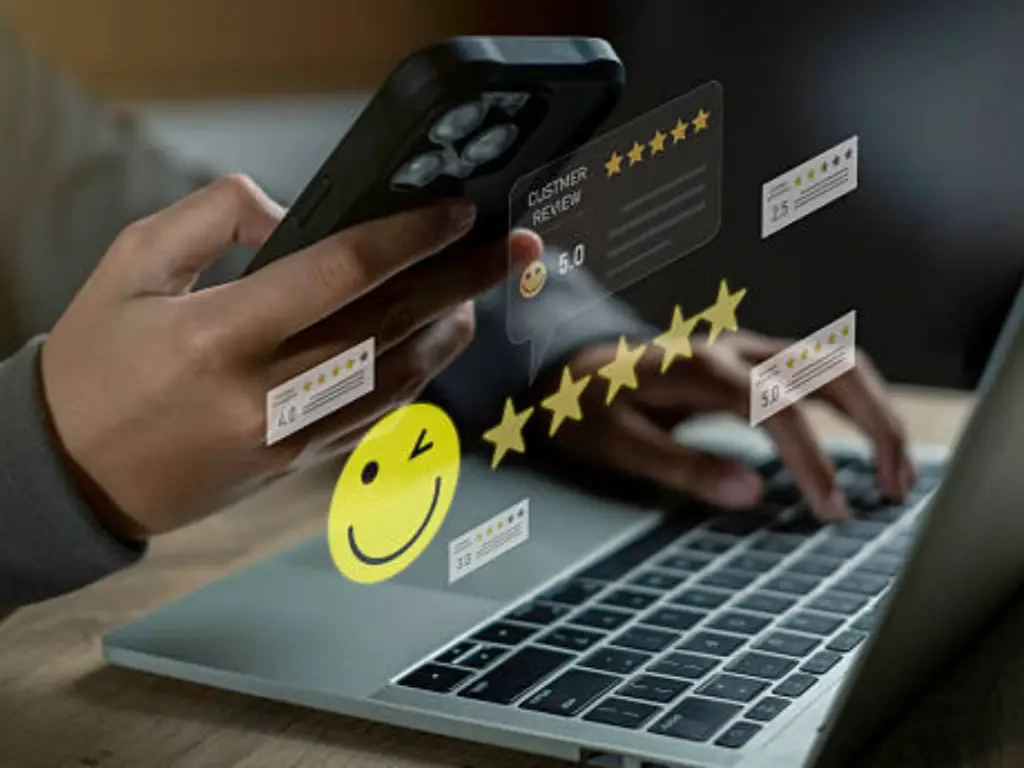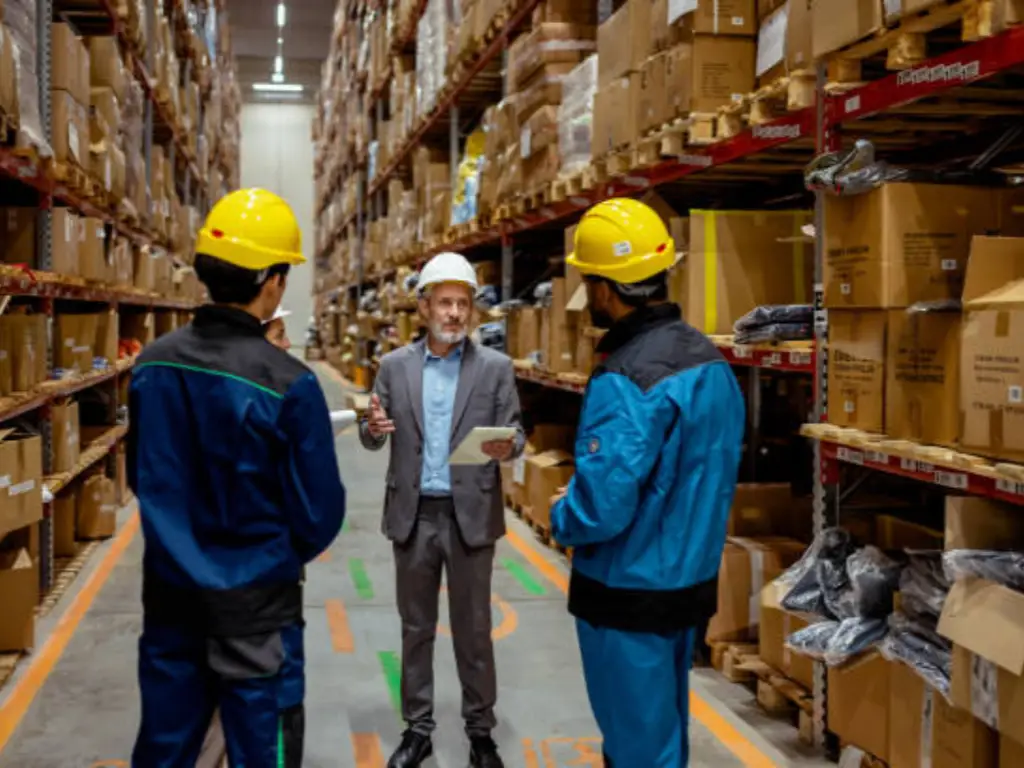Introduction
In the case of any contemporary e-commerce company, success is a two-fold formula: creating demand and fulfilling it. Although marketing and product development take center stage, the operational aspect, which involves the process of taking a product from a click to the doorstep of a customer, is an inseparable process that determines customer satisfaction and sustainability. All this backend process falls under the purview of fulfillment services.
The logistical issues of operating a warehouse of their own, filling boxes, and negotiating with carriers become a huge resource burden as an online store grows. The solution to this logistical puzzle is the key to the transition of a founder-led operation into a scalable enterprise. This guide is a detailed study of order fulfillment services, breaking down the process, assessing strategic models, and identifying the key elements that differentiate a mere logistics partner from a true growth engine. We will discuss the full fulfillment process, its expenses, its advantages, and the alternative models that can provide a more responsive way to profitability to e-commerce companies.
What Exactly Is an E-commerce Fulfillment Service?
An e-commerce fulfillment service is simply the strategic outsourcing of your whole physical order fulfillment process. It is a B2B service provided by a dedicated fulfillment firm, also known as a third-party logistics (3PL) provider, which handles all the processes involved in delivering an order to your customer once they have purchased something.
When you outsource to a fulfillment company, you are leasing their infrastructure, technology, and expertise. You do not lease your own warehouse, hire employees, and operate warehouse management systems, but ship your bulk inventory to their fulfillment center (or several distribution centers). At this stage, the 3PL provider comes in. Their services are an extension of your e-commerce business, which takes care of all the inventory storage to returns.
Focus is the main strategic value of e-commerce fulfillment. It frees entrepreneurs and management teams from the complicated and time-consuming logistics. This enables them to invest their capital and energy in their main business, which is marketing, customer acquisition, brand building, and product development. Concisely, a fulfillment service takes care of the operations to enable you to take care of growth.
The 6 Key Steps in the Order Fulfillment Process

The fulfillment process is an abstract term, but it is a very specific, mechanical process. It is important to know every step of the fulfillment process to assess any fulfillment partner. This is the process of fulfilling orders.
Step 1: Receiving and Storing Inventory
Inbound logistics is the first stage in the chain. Your fulfillment company cannot deliver what it does not possess. Your (merchant) duty is to buy your products and deliver them to the fulfillment warehouse of the provider.
When it arrives, the warehouse employees are given the shipment, check the contents against the packing slip, check the shipment against damage, and assign a location to each unique item (SKU) in the facility. This inventory is then recorded into a warehouse management system (WMS), which is an advanced software that gives a real-time picture of all the stock quantities and their physical locations. This is the formal handoff; your products have been added to the managed store inventory of the provider.
Step 2: Order Syncing & Processing
This is where integration of technology is of utmost importance. The fulfillment system provided by the 3PL should be integrated with your e-commerce platform (such as Shopify, WooCommerce, or BigCommerce) and any other sales channels that you operate (such as Amazon or eBay).
Once a customer makes an order on your online store, the order is automatically and instantly transferred to the WMS of the 3PL. This initiates the order processing stage. The WMS checks the inventory level and ensures that the stock is adequate, distributes the inventory, and creates a picking list to be used by the warehouse staff. This is the secret of scaling the volumes of orders with the help of automated order management.
Step 3: Picking, Packing & Kitting
Having a picking list, a warehouse worker moves through the warehouse area to find the particular items for that order. After picking, all items are transported to a packing station.
In this case, the goods are packed safely in the relevant packing boxes or mailers. It is also at this stage that other services are introduced. Custom packaging options, such as branded boxes, tape, or inserts, are provided by many providers to ensure a consistent customer experience. Here, kitting, which is the process of combining several SKUs into one set (such as a subscription box), also occurs.
Step 4: Shipping & Last-Mile Delivery
After packing, the weight of the box is determined, and the most economical shipping rate is chosen among a variety of carriers. The warehouse management system automatically produces the right shipping labels. The 3PL partner then transfers the package to the carrier (such as FedEx, UPS, or USPS) to deliver orders to the last mile. Since 3PLs deliver millions of packages, they can negotiate large discounts on shipping rates, a type of cost-saving they transfer to their customers.
Step 5: Handling Returns (Reverse Logistics)
The experience of delivery does not stop at the door of the customer. An effective fulfillment plan should also involve returns management, commonly referred to as reverse logistics. When a customer makes a return, he/she usually sends the product to the fulfillment center. The warehouse worker checks the product, identifies its state (e.g., restockable, damaged), and handles it in accordance with your business policies, updating your stock in the WMS and initiating a refund via your e-commerce system. Managing returns effectively is crucial in ensuring that there is good customer service.
Core Benefits of Using a Fulfillment Center
Moving your fulfillment business is a significant business move. The advantages, though, can go well beyond the fact that one does not have to pack boxes.
- Significant Cost Savings: The first and most obvious advantage is the transformation of fixed costs to variable costs. You do away with the fixed overhead of renting your own warehouse (rent, utilities and insurance) and permanent warehouse employees. Rather, you are charged based on the storage space that you actually utilize and the orders that you actually ship. Moreover, you can access the discounted shipping rates of the 3PL, which are nearly always cheaper than those that a single business would be able to negotiate.
- Improved Operational Efficiency: Fulfillment centers are constructed with a single objective in mind, efficiency. Their designs, technology (order management software) and employee training are all streamlined to reduce errors and maximize speed. This increased operational efficiency translates to shorter delivery times, increased accuracy of orders and improved customer experience.
- Focus on Your Core Business: Every hour spent managing inventory levels, printing labels, or dealing with a carrier is an hour not spent on marketing, customer acquisition, or product development. Outsourcing liberates your most precious resource, your time, to concentrate on business growth activities.
- Scalability on Demand: This is, perhaps, the most important strategic advantage. An effective fulfillment partner enables your company to grow without any problems. A small in-house team cannot cope with peak seasons such as Black Friday or a viral marketing campaign. A 3PL possesses the personnel, storage facilities and technology to handle a 10x increase in the volume of orders without failure so that you can fulfill customer demands even when the business is experiencing a boom.
Common Fulfillment Models: A Comparison
Choosing a fulfillment strategy requires understanding the primary models available, each with distinct trade-offs.
In-House Fulfillment (Self-Fulfillment)
This is the way the majority of businesses begin. You are the founder, you keep the products in your garage or a small own warehouse and you process all the orders and ship them yourself.
- Pros:Full control over your stock, personalized packaging, and experience. No management fees.
- Cons: very time-consuming. Not scalable. With increasing order volumes, quality and speed are bound to decrease, and shipping costs are expensive at retail prices.
3PL Fulfillment (Third-Party Logistics)
This is the model that we have been talking about: outsourcing your order fulfillment services to a specialized fulfillment company.
- Pros: Professional, efficient, and highly scalable. Availability of reduced shipping rates and technology.
- Cons: It needs a large initial investment in stock. You have to purchase your inventory, deliver it to the 3PL, and cover the cost of storing inventory. This may pose a problem with cash flow.
Dropshipping (The “No Inventory” Model)
In the conventional dropshipping system, the seller does not have any physical contact with the product. You are nothing more than a marketing organization. Upon receiving an order, you send it to a manufacturer or supplier (usually abroad), who delivers the product to the customer.
- Pros: No inventory, no warehouse, and low start-up.
- Cons: Notoriously low profit margins. You have no control over the quality of products, the delivery experience, or branding. Poor customer service and slow shipping is the norm.
Hybrid Models (e.g., Amazon FBA)
One of the popular hybrids is Amazon FBA (Fulfillment by Amazon). You ship your inventory to the fulfillment network of Amazon, and they store, pack, and ship orders made on their site.
- Pros: Availability of the huge customer base of Amazon and Prime shipping.
- Cons: High fees, strict rules, and you lose control over your branding and customer service. Your data is also used by Amazon to compete against you.
The Hidden Pains of Traditional Fulfillment (3PL)
Although 3PL fulfillment is an effective tool in an established brand, it has serious, underestimated financial implications that can choke a developing ecommerce company. The main issue is inventory management.
- Large initial inventory expenses: You have to purchase your inventory before you can even utilize a 3PL. This involves huge initial capital investment in buying hundreds or thousands of units, usually months before they are needed.
- Critical Cash Flow Strain: This is the greatest pain point. Your lifeblood, your cash flow, is caught up. It is not in your bank account, ready to be marketed or used to create new products, it is on pallets in a fulfillment warehouse. This renders it extremely hard to be agile.
- The Danger of Overstocking: What happens when you get your forecast wrong? You have now been burdened with surplus inventory or dead stock levels. This is not only a sunk cost, but you also have to pay monthly storage charges to the 3PL to have the honor of storing products that are not selling. This directly dilutes your profit margins.
- Inflexibility: Desire to experiment with a new product concept or venture into new markets? With a 3PL, the barrier is high. You are forced to make a huge production run and cover shipping and storage without even having confirmed demand.
A Leaner Path: The Dropshipping Supplier Advantage
The 3PL model has resulted in the emergence of a better, more responsive model: the Dropshipping Supplier (also called a Dropshipping Agent) due to the pains of the model, namely the cash flow and excess inventory issues.

It is not the conventional dropshipping model. It is a hybrid of the two worlds, the zero-inventory, asset-light flexibility of dropshipping and the quality control, branding, and professional fulfillment operations of a 3PL.
A Dropshipping Supplier acts as your all-in-one sourcing and fulfillment provider. Instead of you buying inventory, we hold it. Here is the value proposition:
- Zero Inventory Risk & Unlocked Cash Flow: You do not purchase any inventory in advance. Your cash flow is yours, and it is available to be used in marketing and expansion. It is after selling a product that you pay for. This will totally remove the risk of overstocking and high storage expenses.
- Quality Control: In contrast to the old-fashioned dropshipping where you do not see the product at all, a professional Dropshipping Supplier is your representative on the ground. We buy goods, conduct quality checks and deliver a quality product to your customer.
- Branding & Custom Packaging: The most successful fulfillment provider partners in this area will enable you to create a brand. We are able to support custom packaging, branded inserts, and branded shipping labels, which will provide a high-quality delivery experience that will create customer loyalty.
- Global Fulfillment: We handle the whole logistics process, including complicated international shipping, and deliver your customers fast and reliable delivery times all over the globe.
This is precisely the value we provide at https://www.speedbeedropship.com/. We function as your integrated fulfillment partner and supplier. We bridge the critical gap, offering the zero-inventory benefit of dropshipping combined with the high-touch quality control, branding, and professional fulfillment infrastructure of a world-class 3PL.
How to Choose the Right Fulfillment Partner for You
One of the most important decisions that you will make is the choice of your fulfillment partner. Regardless of whether you are going to use a 3PL or a Dropshipping Supplier, your standards of evaluation must be strict.
| Evaluation Criterion | Key Actions & What to Verify |
| Technology Integration | The partner’s fulfillment system must seamlessly integrate with your ecommerce platform and all your sales channels. Ask to see their order management software and confirm it provides real-time data on inventory and order status. |
| Transparent Pricing | Beware of hidden fees. Demand a clear, itemized list of all fulfillment costs. This includes receiving fees, storage fees (per pallet, per bin, or per item), pick-and-pack fees, and shipping rates. |
| Fulfillment Network | Does the provider have a single fulfillment warehouse or a distributed fulfillment network? Multiple distribution centers closer to your customers can significantly reduce shipping costs and delivery times. |
| Additional Services | Look beyond the basics. Do they offer the additional services you need, such as kitting, custom packaging, or handling specific product requirements (e.g., climate control)? |
| Customer Service & Reputation | This logistics partner will be responsible for your customer experience. What is their customer service like? When an order goes wrong, how do they fix it? Check references and reviews from other ecommerce companies in your industry. |
Final Verdict: Which Fulfillment Model Wins?

No single best fulfillment strategy exists. The correct decision is all about your business model, capital and level of growth.
- In-House Fulfillment is the correct option when the hobbyists, artisans or founders are just beginning and have very low order volumes and want complete control.
- Traditional 3PL Fulfillment is best applied to large, well-established brands with stable, predictable sales, large order volumes, and few SKUs. Their major problem is not cash flow but scale.
- The better model to the new, nimble ecommerce business is a Dropshipping Supplier (such as SpeedBeeDropship). It is aimed at founders that value growth, speed, and capital efficiency. It is the best option when you wish to experiment with new markets and products in a short period, cushion your profit margins against inventory risk, and satisfy your customers without committing your cash to a warehouse.
Finally, your fulfillment infrastructure is not a cost center, it is a strategic tool. Selecting the appropriate partner eliminates the friction in operations and opens the potential of your business to grow.



